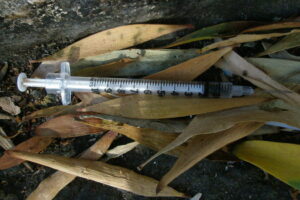A May 26, 2018 article that appeared in the Windsor Star “In the Shadows: People living on Windsor’s streets struggle in Times of Plenty” by Dave Battagello made me think how properly funded Harm Reduction treatment (discussed in the previous blog) could have a beneficial effect on the addicted homeless population.
One problem has always been how to reach the homeless: how does one access a population that lives “in the shadows,” eludes identification and is often lost to follow-up?
I am not at all qualified to offer a comprehensive solution to the enormous problem of homelessness. Rather, I would like to focus attention on how it might be possible to obtain regular access and follow-up to at least a portion of that population: namely, the addicted homeless population with at least a willingness to try a Harm Reduction method of treatment (such as Methadone).
The newspaper article quoted above refers to the need for “more resources and better coordination of services.” It goes on to discuss “supported housing [and] low-income housing with social workers on site to assist with day-to-day issues and also address addictions and mental health woes.” It identifies housing as the first step, and it also identifies “support” as an almost simultaneous adjunct.
It is at this point that a properly coordinated medical intervention of Harm Reduction treatment (as described in my previous blog) +/- an initial course of inpatient rehab could have a very beneficial impact on a potentially significant segment of the homeless population. Harm Reduction treatment requires regular follow-up and patient monitoring that could only be implemented in the setting of a low-income housing program as described in the Windsor Star article. Temporary shelters are not the appropriate setting for implementing such a program.
What is probably lacking at this point is a proper coordination between government housing programs, social services and medical expertise.
The problems of homelessness and addiction are intertwined. As long as Harm Reduction is implemented in a stable environment, this model of addiction treatment is uniquely positioned to have a beneficial impact on both homelessness and addiction because of its emphasis on patient monitoring and patient follow-up, and its addressing of other issues (medical, social and psychological) central to the patient’s well-being.




1 Comment
Leave your reply.